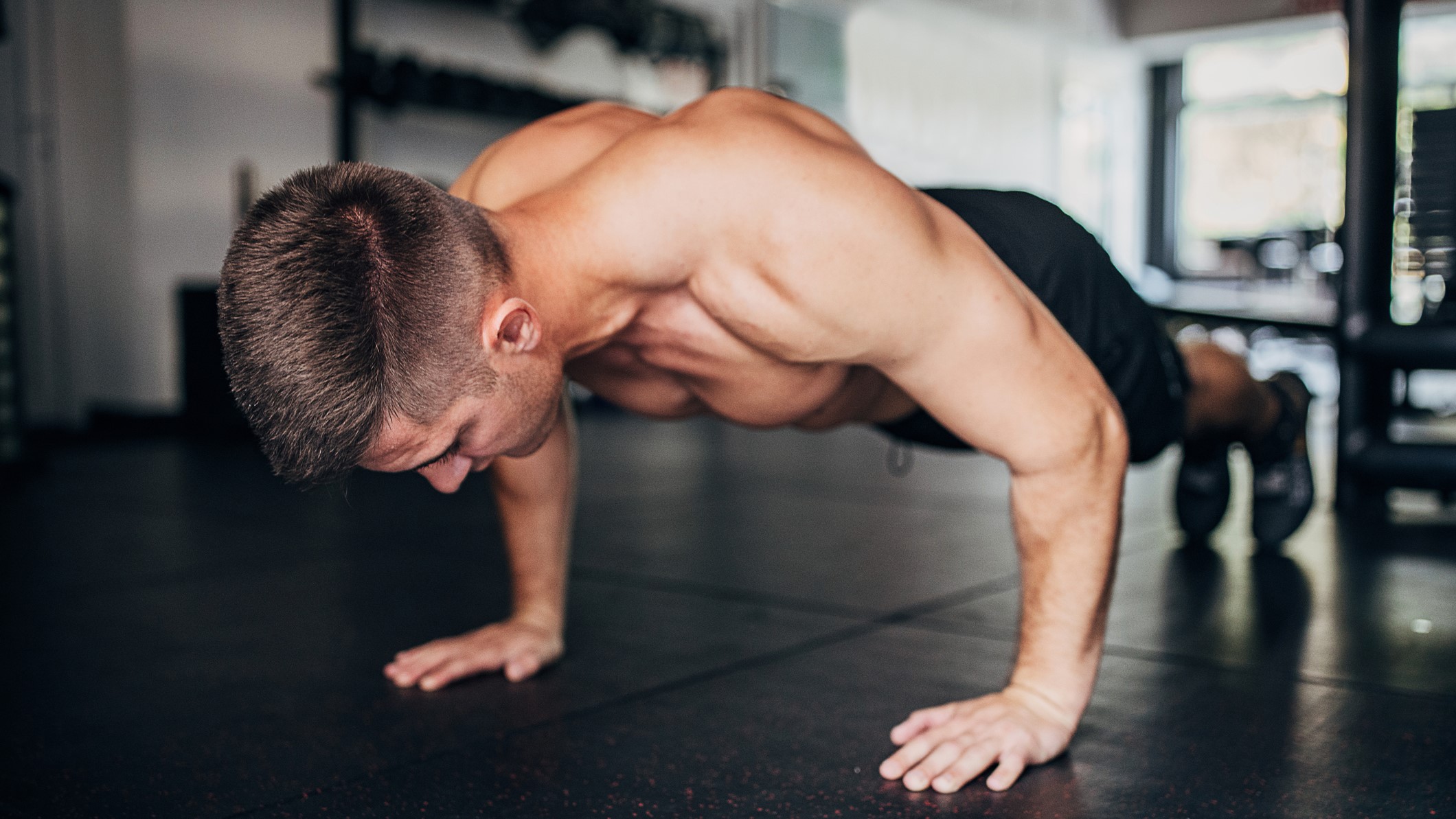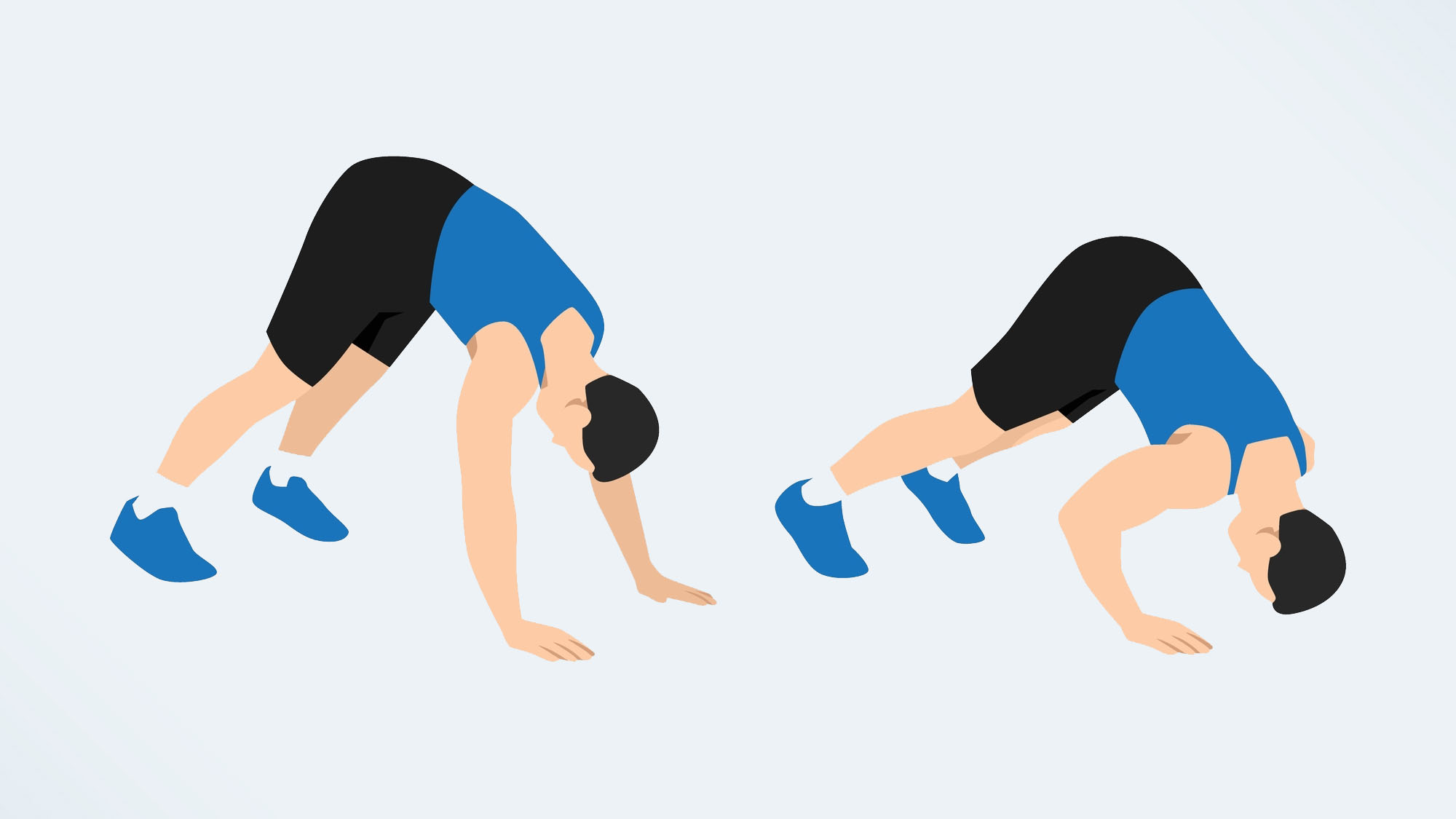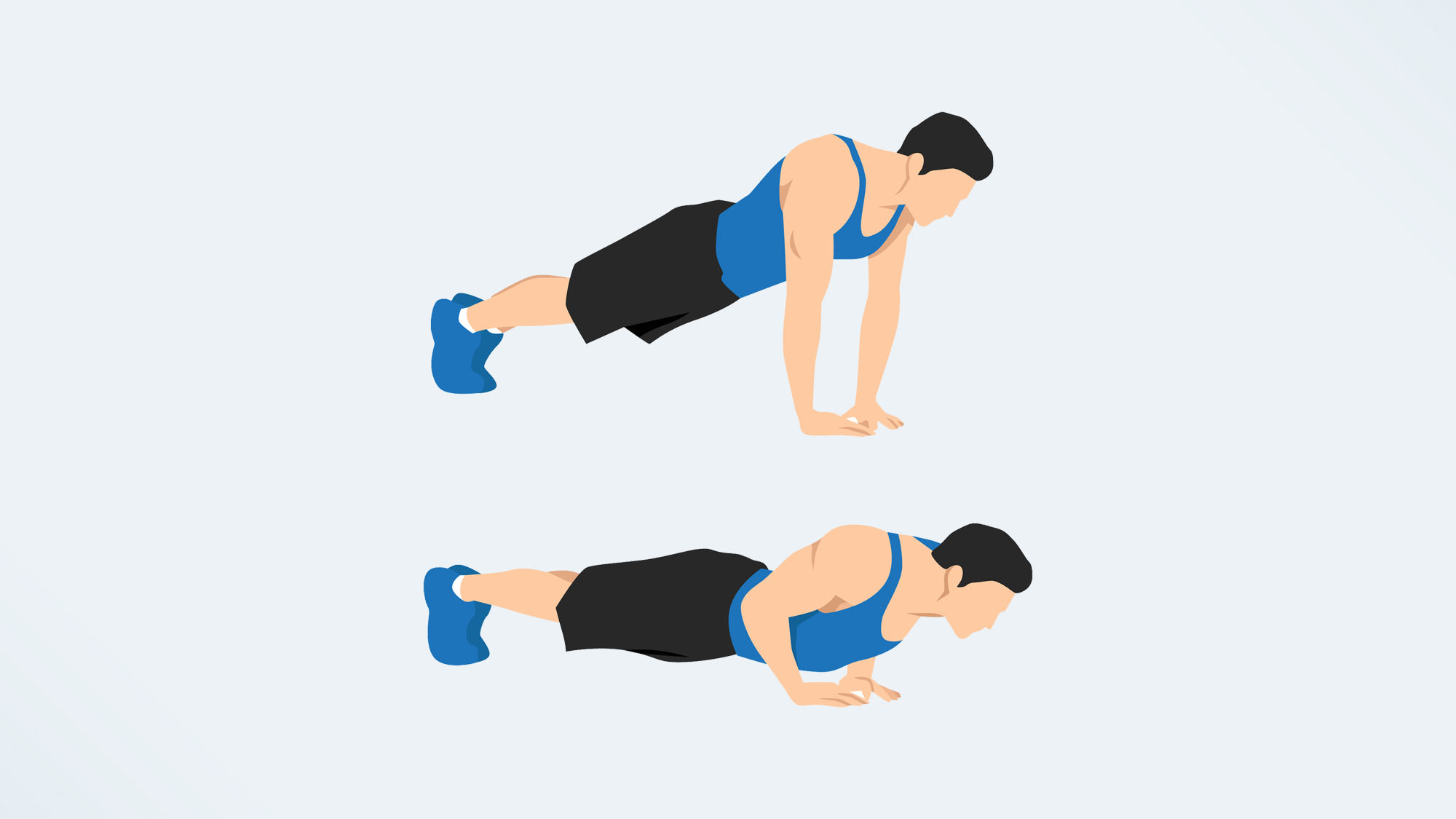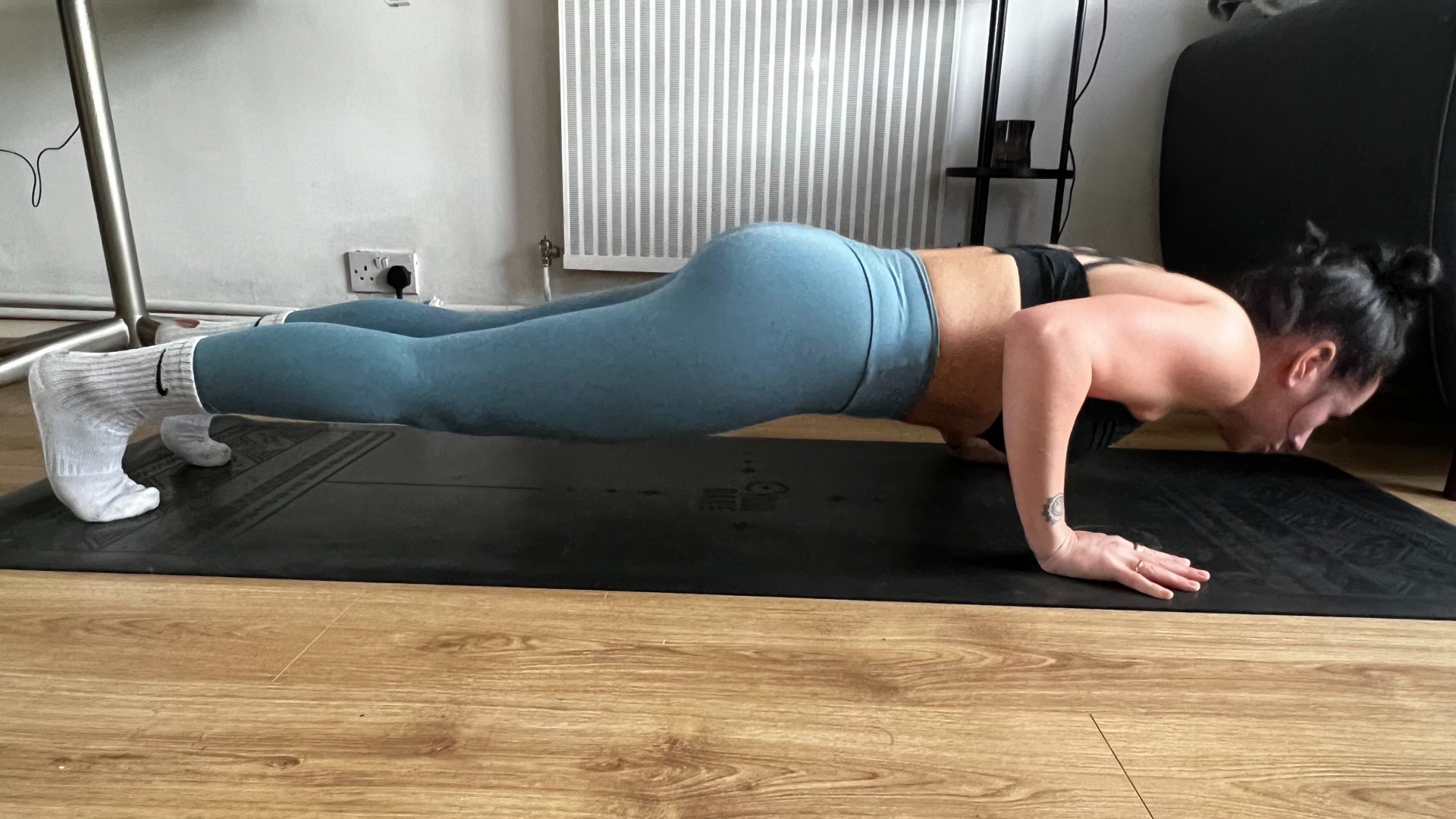
I tackled 200 reps during this one-day push-up challenge and they torched my chest, shoulders and tricep muscles hard. Push-ups are one of the best upper body exercises for building strength and muscle using your body weight, but what would happen if I tried 200 reps in a single effort?
If you’re unfamiliar with push-ups or need to hone your technique, we cover how to do a push-up properly, which is crucial for protecting your elbow, wrist and shoulder joints.
But even with good form locked down, it doesn’t mean this challenge is a good idea, especially if you’re unversed in high-rep push-ups. What works for me might not work for you, so don’t go chest-first into this challenge without assessing your boundaries first.
How to do a push-up
Let’s start with how to do a push-up with good form.
- Start in a plank position, with your weight underneath your shoulders and your palms flat on the floor, shoulder-width apart
- Straighten your arms and engage your abs, sucking your belly button toward your spine
- Keep a straight line from your heels to the crown of your head
- Slowly, with control, bend your arms and lower your chest to the floor, pause, then raise back to your starting position.
If you prefer, place your knees on the floor to help relieve some load from your upper body, and this trick will help you master a push-up faster.
When performed with a good range of motion — fully lowering the chest to the floor and extending the arms at the top without flaring your elbows or dipping the hips — the move targets the pectorals, anterior deltoids (the fronts of your shoulders), triceps and abs without hurting your lower back.
What is the 200-rep push-up challenge?
At a glance:
Get instant access to breaking news, the hottest reviews, great deals and helpful tips.
Push-ups: 20 reps
Pike push-ups: 30 reps
Diamond push-ups: 40 reps
Eccentric push-ups: 10 reps
Deficit push-ups: 20 reps
Pause push-ups: 30 reps
Hand-release push-ups: 40 reps
Barbell push-ups: 10 reps
And if you're fed up with push-ups, try these 5 chest day variations instead by replacing some of the exercises to suit you.
Traditional push-ups: 20 reps

Start with your standard push-ups, which can be done from the knees or on the toes and are a great way to warm up going into a push-up challenge. Keep your core tight, hips lifted and move with control. See our video above for how to do this push-up.
Pike push-ups: 30 reps

Move straight into this variation for 30 reps. The exercise requires holding your body in a position similar to a downward dog and tapping the top of your head toward the floor, mimicking a shoulder press. It’s a hell of a lot harder on your triceps and targets more of your shoulders. Try to only rest every 5-10 reps or perform as one whole set.
Diamond push-ups: 40 reps

There’s even more work for the triceps as you pull focus from the shoulders onto the arms. Create a diamond shape with your hands underneath your chest, which narrows your arm position and sends your triceps into overload, and keep your elbows close to the ribs. I recommend using your knees to build basic strength first.
You're here for 40 reps. Now you should be feeling the fire.
Eccentric push-ups: 10 reps

Eccentric refers to the lowering part of the push-up. Spend at least five seconds lowering your chest to the floor, pause and push the ground away explosively. The research shows that eccentric training could be superior for building strength and muscle rep per rep versus concentric training (pushing back up). Plus, it’s way harder.
Try to complete the 10 reps as one set and take a brief rest after before progressing to the next exercise.
Deficit push-ups: 10 reps
Time to build back up.
Grab a set of the best adjustable dumbbells (or similar) and practice lowering your chest to the floor. The deficit forces the muscles to work through a greater range of motion as your chest has further to travel, which could help build strength and muscle and improve your standard push-up ability.
Pause push-ups: 30 reps

Simply pause for a few seconds at the bottom of the move before pushing back up, which increases time under tension — how long your muscles spend working — and could improve hypertrophy (muscle growth), according to some studies.
Complete 30 reps, trying to minimize rest by breaking reps up into 5 or 10 reps or complete as one set before resting.
Hand-release push-ups: 40 reps

The variation gets used a lot in CrossFit workouts and forces the body to push your body as a deadweight, increasing overall force output. You’ll notice increased activation in the arms, shoulders and core muscles used to drive the movement too, translating to other shoulder exercises.
This is the toughest part, as you build back to 40 reps.
Barbell push-ups: 10 reps

A push-up on a barbell tests core stability, balance, coordination and strength. Your muscles must also work harder to keep the barbell in place, and it takes a decent amount of strength and ability to control. Try to complete the 10 reps without rest to finish the challenge strong!
I did this 200-rep push-up challenge — here's my verdict
This wasn’t a 30-day fitness challenge or even a seven-day effort, so I wasn’t under the illusion that rippling upper-body muscle definition or massive strength gains were waiting at the end. And even after seven days, you’d be hard-pressed to find much more than incremental improvements.
I always tell my clients the same thing — the processes of building strength and muscle — while not the same — both require patience, time, attention to diet and training and a technique called progressive overload (increasing overall training volume by adapting your stimulus). We cover the differences between hypertrophy vs strength training here.
But back to the challenge. Push-ups work on relative strength — how strong someone is, compared with their size — and one of the best ways to test it is by working with your body weight rather than lifting heavy weights. In short, it’s how well you can move your own body weight.
Those with higher levels of relative strength are generally fitter, less fatigued and more efficient movers — think gymnasts or calisthenics athletes. Going into this challenge, I was interested in mine. Now, I lift pretty heavy weights in the gym, but I was shocked by how tough I found this challenge. Sure, 200 reps is a lot, but I felt cooked at the 50 rep mark.
I started with a “standard” push-up for 20 reps, which I breezed through quite quickly because I practice — all the time. But going from this into the push-up variations whacked my triceps, and I had to take more breaks than anticipated.
I also dropped to my knees when I felt my form slipping or needed to reset. I urge anyone to do the same where necessary; this should be treated as a one-off or occasional challenge, so I don’t recommend doing it regularly either.
Perhaps the hardest part was the knock to my competitive ego. I consider myself strong, but the sheer volume hit me, and my muscles fatigued quicker than I hoped. Next time, I plan to modify the reps or switch to a seven-day challenge with higher reps per day to help build the intensity instead.
Overall? My upper body has been well and truly torched, and it's time for a few days of recovery. But despite being humbled, my technique feels strong and I feel stronger, even if it'll take some time yet for 200 reps to feel even slightly bearable.
More from Tom's Guide
- Running vs swimming: which burns more calories?
- I did 50 Windshield Wipers every day for a week — here's what happened to my abs
- Forget crunches, this seated ab workout sculpts your core in 10 minutes

Sam Hopes is a level 3 qualified trainer, a level 2 Reiki practitioner and fitness editor at Tom's Guide. She is also currently undertaking her Yoga For Athletes training course.
Sam has written for various fitness brands and websites over the years and has experience across brands at Future, such as Live Science, Fit&Well, Coach, and T3.
Having coached at fitness studios like F45 and Virgin Active and personal trained, Sam now primarily teaches outdoor bootcamps, bodyweight, calisthenics and kettlebells.
She also coaches mobility and flexibility classes several times a week and believes that true strength comes from a holistic approach to training your body.
Sam has completed two mixed doubles Hyrox competitions in London and the Netherlands and finished her first doubles attempt in 1:11.
